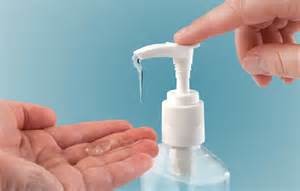As long as I know, diet sodas have always been contentious. Some people say that drinking diet sodas does not affect our health. Some people say that diet sodas are bad. So why do diet sodas still exist if they are bad for our health? Do they really help people who are on diet? I am not a fan of soda products but I usually want to drink soda in the summer. My father always buys cans of sodas but he never drinks diet ones. When I skype with my parents one weekend, I saw him opened the coke, I asked him why he never drinks diet sodas. And he replied that diet coke is worse than normal cokes. This answer made me confused, I wonder what he said was correct. Since I drink sodas in summer, and this relates to my health concerns, I started my research to find out the answer.
First, I find an article about diet sodas on Washington Post. Use examples from 749 Mexican-Americans and European-Americans ages 65 and older in San Antonio Longitudinal Study of Aging (SALSA), they found out that diet soda drinkers gained almost 3 times as much belly fat as non-diet soda drinkers. “Occasional diet soda drinkers added an average of 1.83 inches to their waist circumferences, while the non-drinkers added .8 inches over the 9.4 years of the study. Daily consumers like me gained a striking 3.16 inches” (Washington Post). These details were updated. And this condition has excluded other factors that could affect the study result: age, exercise and smoking. In this case, it seems like that some of the third variables are already left out, but I think there still could have other factors influencing the result, such as gender problem. Men might defer from women in gaining belly fat of drinking diet sodas. Also, various soda brands might cause different results of gaining belly fat.
Due to the adjunct assistant professor of University of Texas Health Science Center in San Antonio, Sharon Fowler, there always has an argument about the diet soda and artificial sweeteners. One study he made in 2008 found that there is significant increase in body mass index within diet soda drinkers but within this study, it does not prove cause and effect but an association. And moreover, there is no relation between regular sugary soda drinks and waist circumference growth. My mom always blames my dad of drinking too many sugary and artificial flavors, which cause him to gain belly fat. And when people get older, too much sugar consume can associate with health issues, such as increased high blood pressure and obesity. But from the study above, it turns out that there is not even a relation between soda drinks and waist circumference growth. According to Calorie Control Council, it suggests that people might control their calories on diet soda drinks but let go on other food consumptions. That means my daddy’s gaining of belly fat can come from other factors, which could be the third variables, but not normal soda drinks since he never drinks diet sodas.
Second, I find a research about the usage of citrate, malate and total alkali’s concentration in diet sodas to help patients with hypocitraturic calcium nephrolithiasis or uric acid nephrolithiasis. Scientist conducted a research, calculating 15 diet sodas and a lemonade beverage from the perspectives of total concentration of respective anions, beverage pH, and citric and malic acid pK to find out which one is most useful for dietary therapy. The result for the lemonade beverage is 6.30mEq/l. And here are the results for some diet sodas: Diet Sunkist Orange 8.38 mEq/l, Diet Canada Dry Ginger Ale 6.88 mEq/l, Diet Mountain Dew 6.78 mEq/l and lowest total alkali (<1.0mEq/l) for cola based sodas. (Sciencedirect).
Koff studied 21 patients with kidney stones, of whom 11 with hypocitraturia were treated with lemonade and potassium citrate in a crossover design trial. Penniston examined 63 patients with hypocitraturia on lemonade therapy and 37 on potassium citrate plus lemonade by giving both low calorie lemonades. “Urine citrate increased by 81 mg daily in the lemonade group and by 184 mg daily in the potassium citrate plus lemonade group” (Sciencedirect). The result inclines to the conclusion that combined therapy change was significant but there is not enough evidence to prove the correlation.
So for the two researches, the first one starts in the negative perspective of diet sodas saying that diet sodas could cause belly fat while the result turns out to be there is no relation between diet sodas and the growth of waist circumference. The second one is on the positive site saying that diet sodas can help dietary treatment for hypocitraturia and low urine pH. Although only the combined therapy of potassium citrate plus lemonade had obvious change, the final conclusion states that there is not enough evidence proves any correlation between beverage pH and total beverage alkali content. So for the second research, I wonder if there could happen because of there were too few samples? Did the test result can differ from gender and age differences? Though in the studies, the conclusions are that there is no relationship between belly fat and diet soda consuming or diet sodas and treatment for hypocitraturia, further studies need to be conducted to find out actual clinical effects.




















 to in negative senses, such as with eating or drinking. The trio polled 316 people between ages 18 and 29 on how of often they watched TV, how much of that was binging (which in this study was defined as two or more episodes of any length) and how regularly they experienced feelings of “loneliness, depression, and self-regulation deficiency.”
to in negative senses, such as with eating or drinking. The trio polled 316 people between ages 18 and 29 on how of often they watched TV, how much of that was binging (which in this study was defined as two or more episodes of any length) and how regularly they experienced feelings of “loneliness, depression, and self-regulation deficiency.”



 Conversion therapy is something very interesting and horrifying at the same time. The idea of conversion therapy is that people’s sexual orientation and gender identity can be changed and made “normal.” The way they do this vary massively but the most recent case came from China where the main
Conversion therapy is something very interesting and horrifying at the same time. The idea of conversion therapy is that people’s sexual orientation and gender identity can be changed and made “normal.” The way they do this vary massively but the most recent case came from China where the main 











 I always wondered why people overused the term, “beauty is in the eye of the beholder.” Based upon my knowledge of the celebrity world, it seems that there tends to be a general idea of who is considered good-looking and who is not. But maybe I was wrong, and not as many people agree as I had thought.
I always wondered why people overused the term, “beauty is in the eye of the beholder.” Based upon my knowledge of the celebrity world, it seems that there tends to be a general idea of who is considered good-looking and who is not. But maybe I was wrong, and not as many people agree as I had thought.